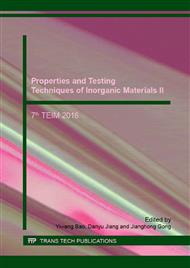p.460
p.465
p.470
p.481
p.490
p.495
p.500
p.505
p.510
Primal Study on Mechanical Properties of Phosphate Based Geopolymer
Abstract:
A novel inorganic matrix for fiber composites prepared from phosphate based geopolymer (PBG) was synthesized at ambient temperature. The mechanical property of PBG paste and the carbon fiber reinforced PBG composite was determined. Test results showed that the compressive strength of PBG paste at the age of 28 days was found to be 33.67 MPa. Moreover, the carbon fiber sheets enhanced the bending strength and ductility of PBG paste by up to 1300% and 307% respectively. Finally, the strengthening effect of this new composite on concrete beam was evaluated. The carbon fiber PBG composite applied on the bottom surface of concrete beam increased the bending strength by 183%. Therefore, it is concluded that PBG can be a promising inorganic matrix that can be used to strengthen deteriorated concrete structures.
Info:
Periodical:
Pages:
490-494
Citation:
Online since:
January 2017
Authors:
Price:
Сopyright:
© 2017 Trans Tech Publications Ltd. All Rights Reserved
Share:
Citation:


